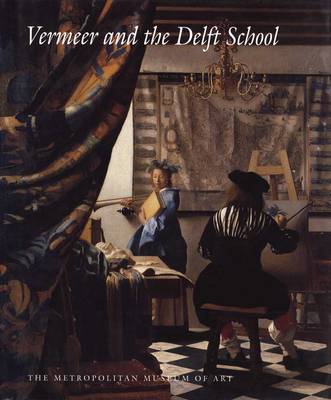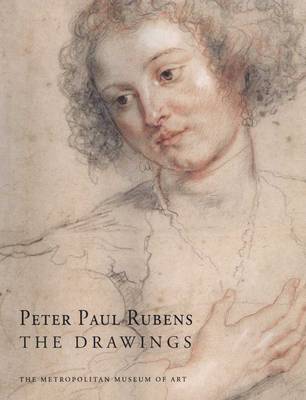Metropolitan Museum of Art
2 total works
Vermeer and the Delft School
by Walter Liedtke, Michiel C. Plomp, and Axel Ruger
Seventeenth-century Delft has often been viewed as a quaint town whose artists painted scenes of domestic life. This important book revises that image, showing that the small but vibrant Dutch city produced a wide range of artworks, including luxurious tapestries and silver objects, as well as sophisticated paintings for the court at The Hague and for patrician collectors in Delft itself.
The volume traces the history and culture of Delft from the 1200s through the lifetime of the city's most renowned painter, Johannes Vermeer (1632-1675). Some ninety paintings (sixteen of them by Vermeer), forty drawings, and a choice selection of decorative arts are examined at length and reproduced in full color. The paintings include state portraits, history pictures, still lifes, views of palaces and church interiors, illusionistic murals, and refined genre pictures by Vermeer and Pieter de Hooch. Besides magnificent still lifes, portraits and landscapes, the rich works on paper encompass exquisite drawings by Delft artists on the vellum pages of a presentation album and sketches of the town by visiting artists. Among the decorative arts are tapestries, bronze statuary, silver gilt, Delftware, and glass. Some two hundred additional works, by both Delft artists and masters from other Dutch cities, are also illustrated and discussed.
A final essay takes the reader on a walk through seventeenth-century Delft. It is accompanied by maps of the city's neighborhoods that indicate major landmarks and the homes of patrons, art dealers, and artists-who in addition to De Hooch and Vermeer, include Balthasar van der Ast, Leonaert Bramer, Carel Fabritius, Gerard Houckgeest, Michiel van Miereveld, Adam Pynacker, Jan Steen, Willem and Hendrick van Vliet, and Emmanuel de Witte.
This handsome book serves as the catalogue for the exhibition "Vermeer and the Delft School" presented from March 8 to May 27, 2001, at The Metropolitan Museum of Art, New York, and from June 20 to September 16, 2001, at The National Gallery, London. [This book was originally published in 2001 and has gone out of print. This edition is a print-on-demand version of the original book.]
Peter Paul Rubens: The Drawings includes amagnificent selection of drawings by one of the greatest artists of the seventeenth century. For the Flemish artist Peter Paul Rubens (1577-1640), drawing was a fundamental activity. Ranging from delightful renderings of children and elegant portraits of noblemen and women to vigorous animal studies and beautiful landscapes, Rubens's drawings are renowned for their superb quality and variety.
This exquisite book presents-in beautiful full-color reproductions-more than one hundred of the finest and most representative of Rubens's drawings, from private and public collections around the world. Essays by Anne-Marie Logan and Michiel C. Plomp provide overviews of Rubens's career as a draftsman and of the dispersal of his drawings among collectors after his death. The authors discuss the various functions of Rubens's drawings as preparatory studies for paintings, sculpture, architecture, prints, and book illustrations. The volume also includes a sampling of the artist's early anatomical studies and copies after antique sculpture as well as several sheets by other artists that Rubens retouched, restored, or reworked.
This publication accompanies an exhibition at The Metropolitan Museum of Art, New York (January 14 to April 3, 2005)-the most comprehensive exhibition of Rubens's drawings ever held in the United States. [This book was originally published in 2005 and has gone out of print. This edition is a print-on-demand version of the original book.]

